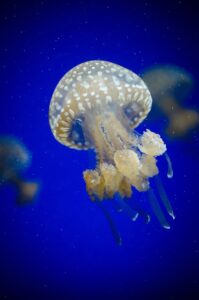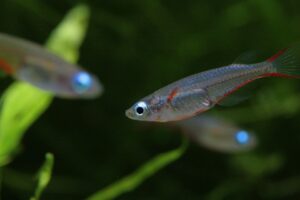
Understanding Common Fish Illnesses
Fish, like all living organisms, are susceptible to various diseases and ailments. These illnesses can stem from bacterial, viral, fungal, or parasitic infections. Understanding the common symptoms and causes of these diseases is the first step toward effective treatment and recovery.
Bacterial Infections
Bacterial infections are among the most prevalent diseases affecting fish. They often manifest as red sores, fin rot, or ulcers on the fish’s body. Two of the most common bacterial diseases are Columnaris and Aeromonas. These infections typically occur due to poor water quality, stress, or injuries.
Viral Infections
Viral infections in fish are more challenging to diagnose and treat. They can cause symptoms such as lethargy, color changes, and abnormal swimming behaviors. Koi Herpesvirus (KHV) and Lymphocystis are notable viral diseases that require immediate attention to prevent outbreaks.
Fungal Infections
Fungal infections often appear as white cotton-like growths on the skin, gills, or fins. These infections usually occur when fish are stressed or injured, providing opportunistic fungi the chance to invade.
Parasitic Infections
Parasites such as Ichthyophthirius multifiliis (commonly known as Ich) and flukes can cause significant distress to fish. Symptoms include white spots, excessive scratching, and difficulty breathing.
Quick Diagnosis and Treatment
Effective treatment of fish illnesses requires prompt diagnosis and appropriate intervention. Here are some steps to ensure quick recovery for your aquatic pets.
Observation and Diagnosis
Regular observation of fish behavior and appearance is crucial. Look for changes in swimming patterns, appetite, color, and physical signs like spots or sores. Once you notice any abnormalities, act swiftly to diagnose the issue.
Water Quality Management
Most fish illnesses stem from poor water conditions. Regularly test the water for pH, ammonia, nitrite, and nitrate levels. Ensuring optimal water quality is essential in both preventing and treating fish diseases.
Isolation of Infected Fish
Quarantine sick fish in a separate tank to prevent the spread of disease to other healthy fish. This isolation tank should have similar water conditions to minimize stress during treatment.
Treatment Options
Various treatments are available depending on the type of infection. Here are some effective options for each category of fish illness.
Treating Bacterial Infections
Antibiotics such as erythromycin and tetracycline are commonly used to treat bacterial infections. Follow dosage instructions carefully and continue treatment for the recommended period, even if symptoms improve.
Treating Viral Infections
Viral infections are tricky as there are no direct treatments. Focus on supportive care, such as maintaining excellent water quality and providing a stress-free environment. Vaccination is an option for certain viral diseases like KHV.
Treating Fungal Infections
Antifungal medications like malachite green and methylene blue are effective against fungal infections. Ensure proper dosage and follow the treatment regimen strictly.
Treating Parasitic Infections
For parasitic infections, medications containing formalin, copper, or praziquantel are effective. Ich, a common parasitic disease, can be treated with increased water temperatures and appropriate medication.
Preventative Measures
Prevention is always better than cure. Implementing preventive measures can significantly reduce the risk of fish illnesses.
Regular Water Changes
Performing regular water changes is crucial for maintaining a healthy aquarium environment. It helps reduce the buildup of harmful chemicals and waste, keeping your fish healthy.
Proper Filtration
Invest in a quality filtration system to maintain clean and oxygen-rich water. Regularly clean and service the filter to ensure its optimal performance.
Nutrition
Provide a balanced diet tailored to your fish species. High-quality food enhances their immune system, making them less susceptible to diseases.
Quarantine New Additions
Always quarantine new fish for at least two weeks before introducing them to the main tank. This practice helps prevent the introduction of potential pathogens.
Conclusion
Effective management and treatment of fish diseases involve a combination of prompt diagnosis, appropriate treatment, and preventive measures. By maintaining a healthy environment and observing your fish regularly, you can ensure their quick recovery and long-term well-being. Always consult with a veterinarian or aquatic specialist if you are unsure about a diagnosis or treatment plan. With the right care, your aquatic pets can thrive in their environment, free from illness and distress.
#ChatGPT assisted in the creation of this article.








